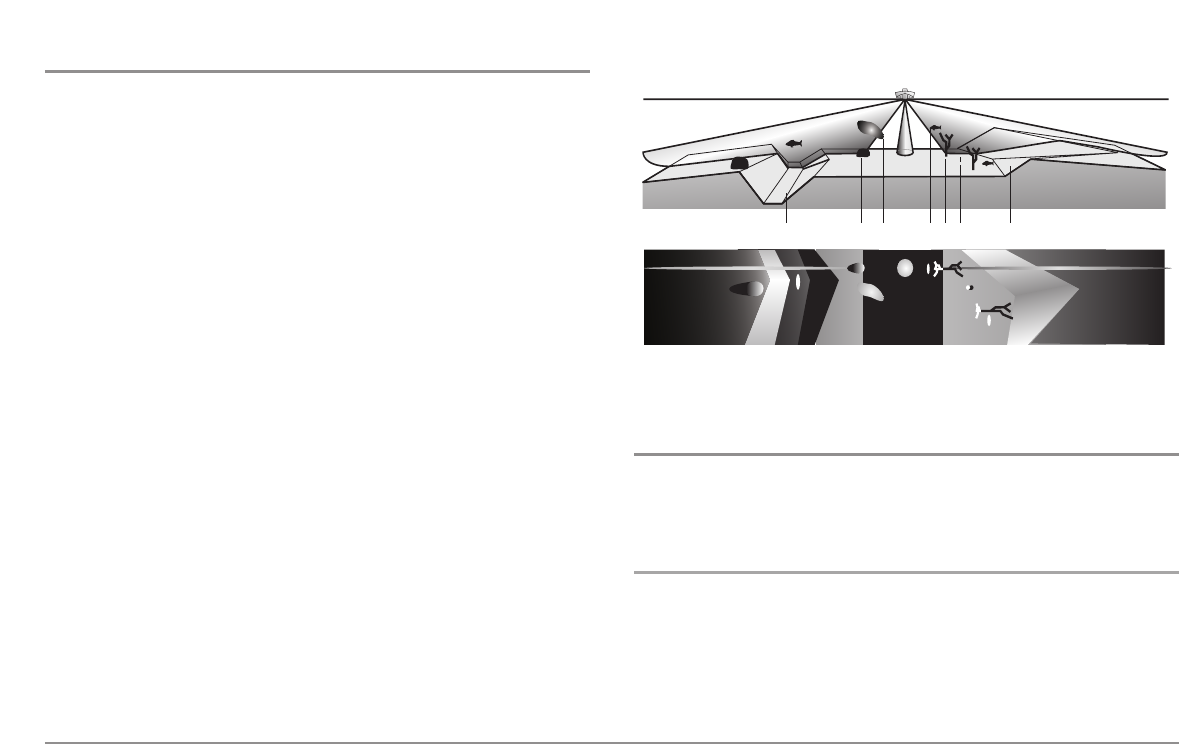
Side Imaging Technology: How it works
Side Imaging sonar uses two very precise sonar beams that are directed to
either side of the boat and “illuminate” the bottom contour, structure, and
fish, and display results in a “picture-like” image.
• Side beams are extremely narrow from front to back, and provide
“thin slices” of the bottom for high resolution imaging.
• Side beams can search an area that is 720 feet wide (360 to each
side), with a typical depth performance of 150 feet when the side
beam frequency selection is set for 455 kHz..
The main benefit of Side Imaging sonar to anglers is that it provides an
overall survey of a large area of water. This gives you a better understanding
of the bottom topography and how structure is oriented for more efficient
fishing. Saltwater anglers pick up precise details of popular fishing structure
like wrecks, reefs, humps and drop-offs, as well as being able to spot bait
balls in open water. Freshwater anglers can see fish-attracting structure
such as timber, stumps, rocks and creek beds.
Side Imaging: On the water Interpretation
Use the following side imaging examples to help you interpret the side
imaging display.
Imaging Tips
Boat speed: Side imaging is best performed at boat speeds between 2 to 6
mph. If the boat is stationary, the same information is displayed over and
over. If the boat is moving very quickly, there will be gaps between the strips
of information. The best boat speed to use will depend on the side range
selected. Slower speeds are good for longer ranges, while faster speeds can
be used at shorter ranges.
Water Column
Bait BallRockCreek Bed Tree BankStumpFish
Side Imaging Representation
31


















